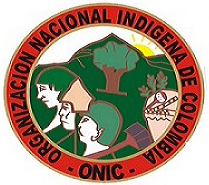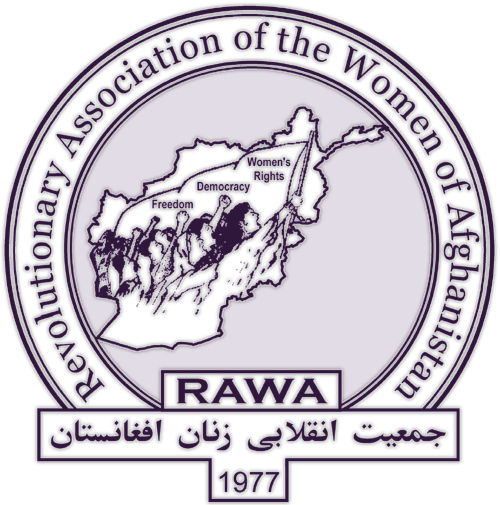mining
Peru: populist pursues presidency from prison
Left-populist presidential candidate Gregorio Santos Guerrero insists he will run in Peru's April election—despite remaining behind bars at Ancón I prison outside Lima. Santos, affectionately known as "Goyo," was already re-elected to the presidency of the northern region of Cajamarca from prison in 2014, and officially remains the region's executive. He says his "preventative detention" under pending corruption charges is political retaliation for his advocacy for the peasants and poor of Cajamarca—especially his support of the region's popular struggle against the US-backed Conga gold mine mega-project, now stalled due to widespread protests. In a statement this month, he said he would not be detained "if the law were applied equally," and scoffed at the notion that he was a flight risk while officially serving as a regional president. While Santos has been imprisoned, Cajamarca's acting executive has been his vice president, Porfirio Medina. (Peru.com, Feb. 12; Andina, Feb. 10; La Republica, Feb. 1)
Colombia: court protects highlands from mining
Colombia's Constitutional Court on Feb. 7 revoked all licenses granted to companies that sought to carry out mining activities on páramos, the high alpine meadows that protect watersheds. The ruling overturns Article 173 of the government's new National Development Plan (PND), which allowed 347 existing licenses in the alpine zones to move ahead, although barring the issuing of new ones. The ruling also struck down provisions of the PND that barred victims of the country's armed conflict from reclaiming usurped lands that had been converted into so-called "Projects of Strategic National Interest" (PINE). Additionally, the court overturned a third article that allowed the government to forcibly expropriate privately-owned land for mega-projects. The decision is seen as a blow to the ambitions of Vice President Germán Vargas Lleras, mastermind of the PND. The case was brought by the left-opposition Polo Democrática. (Colombia Reports, El Tiempo, Equilibrio Informativo, El Heraldo, Barranquilla, Feb. 9; El Espectador, RCN Radio, Feb. 8; Silla Vacía, Feb. 7)
Colombia: peasants sue over mining contamination
Indigenous and Black communities in Colombia's Chocó department filed a lawsuit this week, claiming 37 of their children died after drinking water contaminated with mercury by nearby mining operations over the past three years. The suit was brought before Colombia's Constitutional Court, which has ordered a thorough test of the water quality in the Riosucio and Andagueda rivers, which merge to form the Río Atrato. The affected Embera Katío and Afro-Colombian communities depend on these rivers for fishing and agriculture as well as direct consumption of water. The plaintiffs, represented by the Greater Community Council of the Popular Campesino Organization of the Upper Atrato (COCOMOPOCA), charge that unchecked gold mining in the zone has caused an "environmental crisis, which has had a devastating effect and cost the lives of the indigenous and Afro-descendant children." The Constitutional Court, in addition to asking the UN's Food and Agriculture Organization (FAO) for assistance in the water quality tests, also called on the University of Cartagena to prepare a report on the health impacts of mercury and cyanide contamination. (Colombia Reports, Feb. 4; El Tiempo, El Espectador, El Colombiano, Feb. 3)
Jakarta: ISIS franchise exploited sectarian tensions
ISIS claimed responsibility for the coordinated bomb blasts and armed attacks that left at least seven dead—including five assailants—in the Indonesian capital Jakarta Jan. 14. Security forces battled militants for hours in the city's central business and shopping district. The online statement said the attack was carried out by "soldiers of the Caliphate," targeting "citizens of the Crusader coalition" against ISIS. Indonesia is not actually part of the coalition fighting ISIS in Iraq and Syria. It has been invited to join the new Saudi-led Islamic Military Alliance, but last month announced that it had not reached a decision to do so. (BBC News, SCD, Australia, Jan. 14; DNK, Pakistan, Dec. 18)
Peru: hydro opponent slain in Cajamarca
An opponent of the planned Chadín II hydro-electric complex on the Río Marañon in northern Peru was assassinated Dec. 28, gunned down in a hail of five bullets at his home in a rural district of Cajamarca region. Hitler Ananías Rojas Gonzales, 34, was president of the local Ronda Campesina (peasant self-defense patrol), and had recently been elected mayor of the pueblo of Yagen in Cortegana district of Celendín province. Also the vice-president of the Yagen Defense Front, formed to protect the area's natural resources from development interests, he had received numerous death threats for his opposition to the hydro project, as well as legal charges of "kidnapping" (often employed against activists who block traffic during protests). He leaves behind five children. (Servindi, Dec. 28)
Peru: miner protests paralyze rainforest region
On Dec. 9, informal gold-miners in Peru's southern rainforest region of Madre de Dios suspended a paro or civil strike they had launched more than two weeks earlier. Leaders of the Alliance of Federations said they would call off the strike as talks were underway with a team from Peru's cabinet, the Council of Ministers, that arrived in the remote region that day. Since Nov. 23, regional capital Puerto Maldonado had been paralyzed by protesters demanding the national government drop its new plan to crack down on illegal mining and logging operations. Specifically, they sought the overturn of Supreme Decree 013-2015—which would supervise and control the sale of chemicals that can be used for illegal mining—and Supreme Decree 1220, a measure that seeks to fight against illegal logging. Talks are to center around establishing a "Table for Sustainable Development" in the region, coordinating national policy with popular organizations.
China gets naval base in Djibouti —and Namibia?
Last month, the New York Times reported that China is to establish its first overseas military base as part of "a sweeping plan to reorganize its military into a more agile force capable of projecting power abroad." The base, in the Horn of Africa mini-state of Djibouti, will be used for policing the Gulf of Aden against piracy. The US also has 4,000 troops stationed at Djibouti's Camp Lemonnier—from which it conducts drone operations in Somalia and Yemen. Former colonial master France as well as Japan and other nations also station forces in Djibouti. (The Hill, Dec. 10) Now reports are mounting that China is seeking a second base in Africa—this time in Namibia, which currently hosts no foreign military forces.
Brazil to sue mining giants for dam failure
Brazil's Minster of Natural Environment said Nov. 27 that the country's government plans to sue BHP Billiton Ltd., Vale SA, and Samarco Mineração SA for $5.24 billion for damages caused by a dam collapse at an iron ore site the two co-own. The iron ore site, Samarco Mineração SA, is a joint mining venture between the two companies. BHP Billiton Ltd. is the largest mining company, and Vale SA is the biggest ore miner in the world. The dam contained and released 60 million cubic meters of mine waste and mud that killed at least 13 people, left approximately 11 people missing, and devastated an entire village when it collapsed earlier this month. Brazilian Minister Izabella Teixeira announced that the government would seek to create a fund to compensate victims and to pay for the environmental recovery of the effected areas. The fund would be created gradually as a percentage of the companies' profits. The Special Rapporteurs sent by the UN Office of the High Commissioner for Human Rights (OHCHR) reported that the "steps taken by the Brazilian government, Vale and BHP Billiton to prevent harm were clearly insufficient" and that "this disaster serves as yet another tragic example of the failure of businesses to adequately conduct human rights due diligence to prevent human rights abuses."















Recent Updates
21 sec ago
15 hours 9 min ago
15 hours 34 min ago
22 hours 54 min ago
1 day 36 min ago
1 day 16 hours ago
1 day 23 hours ago
3 days 17 hours ago
3 days 17 hours ago
3 days 22 hours ago